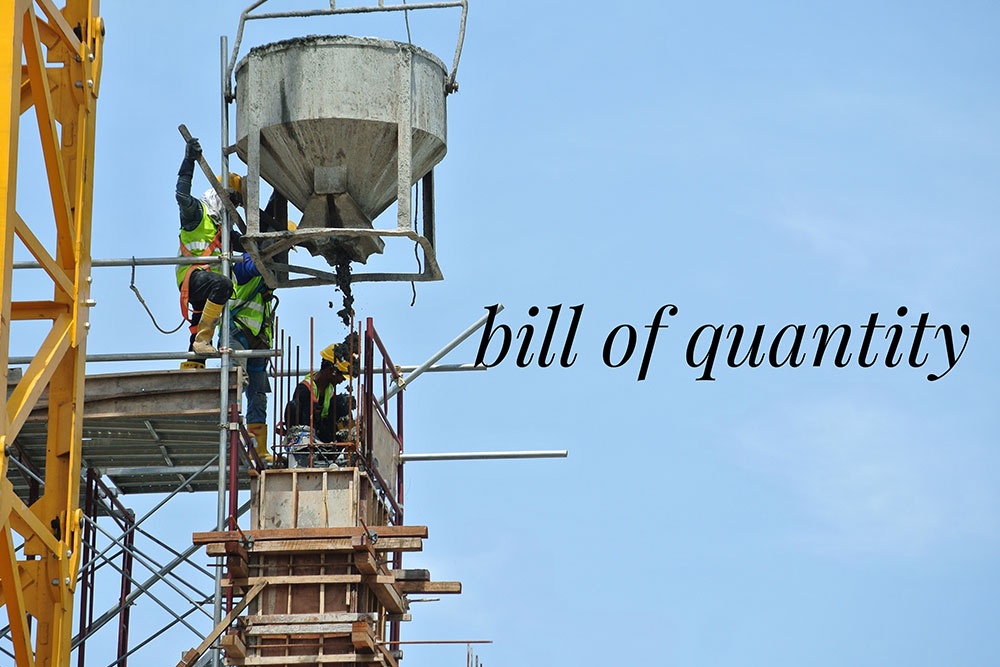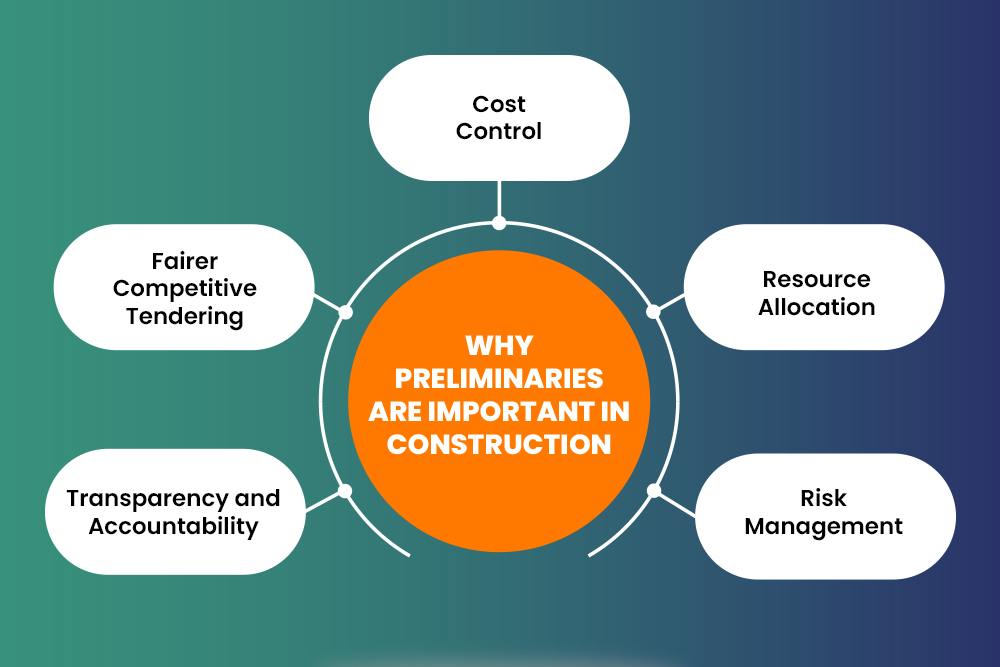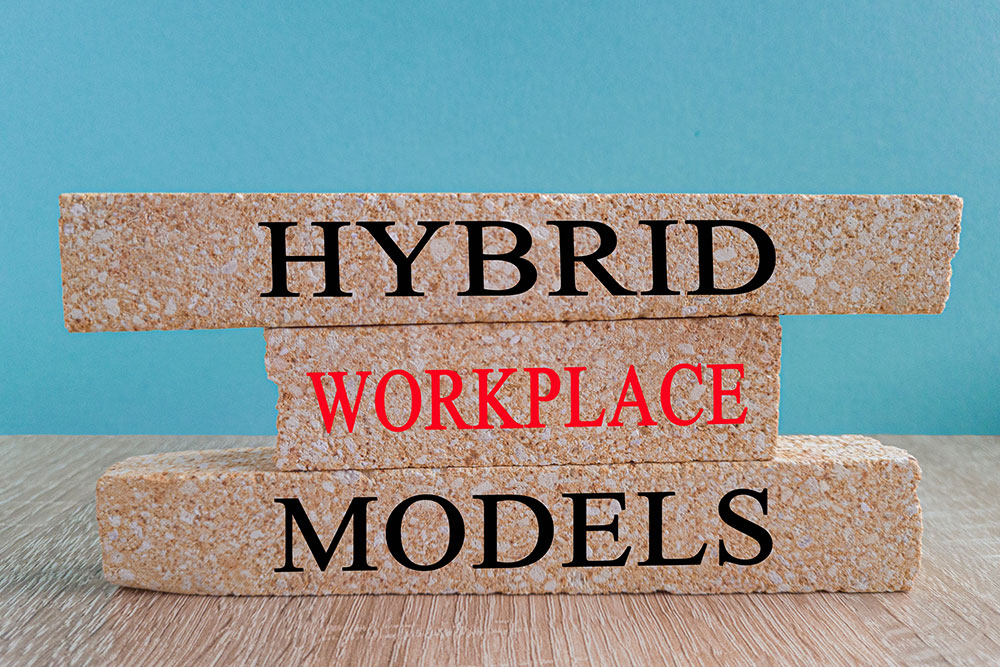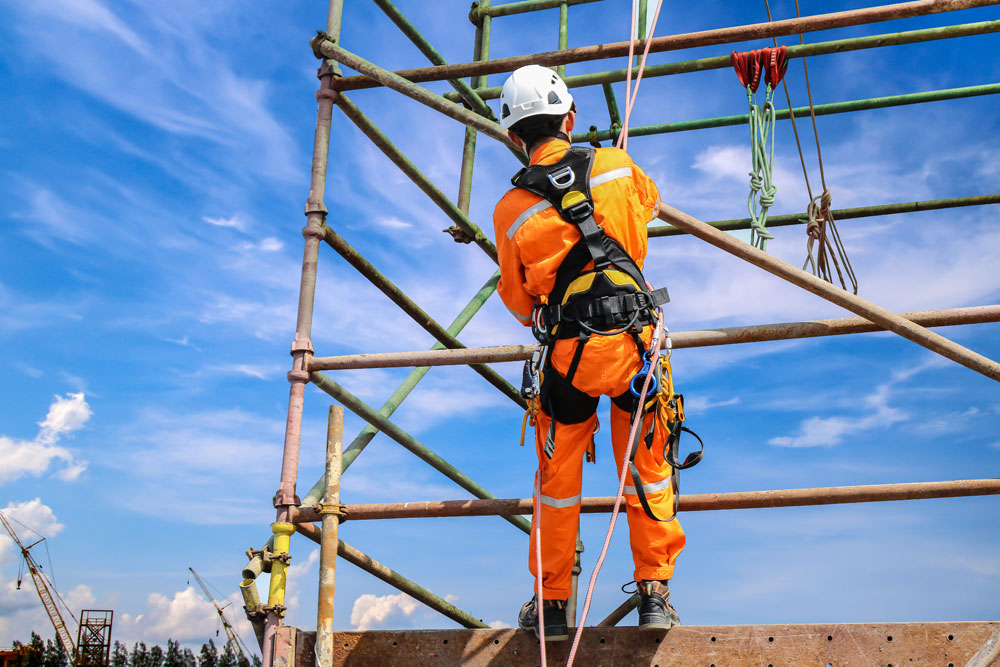
In construction, preliminaries are the supporting costs needed to run the project.
These include site setup, welfare facilities and compliance requirements. They’re essential for safe and efficient delivery, but they don’t become part of the finished structure.
In this blog, we explain exactly what preliminaries are in construction and highlight some of the most common examples.
What Are Preliminaries in Construction?
When a construction job is put up for tender, companies bid for the work by showing how much they’ll charge to complete the project.
This information is compiled in a document known as a bill of quantities (BoQ). In the BoQ, all projected costs are itemised and totalled.
Among these are preliminaries (also called prelims).
Prelims are costs that are essential to deliver the project but don’t form part of the finished building. They relate to the operation and administration of the site, rather than permanent materials like bricks or steel.
Typical examples of preliminaries include:
- Site setup costs, such as temporary fencing, hoardings and welfare cabins
- Salaries of site managers, supervisors and security staff
- Temporary services, including power, water and lighting
- Health and safety measures, like signage and personal protective equipment
- Access arrangements, such as scaffolding or traffic management
- Insurance, permits and compliance documentation
Essentially, preliminaries make the work possible, safe and legally compliant. But once the project is complete, these costs leave no trace in the final structure.
What Might Preliminaries Include for a Typical Construction Job?
Preliminaries generally cover the labour, equipment and services needed to manage and operate the site, rather than the permanent works. Some are one-off costs, such as site setup or permits, while others are ongoing throughout the project, like supervision, security or temporary utilities.
Everything is included in the preliminaries, from ensuring the work site has an electricity supply to obtaining the necessary council permits and providing site security.
Each construction job will have its own unique requirements, so it’s impossible to develop a ‘one size fits all’ template. However, some generalisations can be made when working out what are the preliminaries in construction projects.
Usually, preliminary costs are categorised as follows:
- Initial costs
- Ongoing costs
- Final costs
Within these categories, there are four main types of preliminary costs:
- Planning and design costs
- Mock-ups, testing and sampling costs
- Administration and management costs
- Site-based costs
Below, we’ve explained these costs in more detail.
Costs for Planning and Design Services
Whatever the expected outcome, a construction project needs to be planned and designed carefully.
- Contractors must allocate tasks, create and maintain work schedules and report on progress
- The planning and design processes can span many work sections
- All costs involved in planning and design must be estimated as accurately as possible and listed in detail
Mock-ups, Testing and Sampling Costs
No one wants to buy something without seeing it first. Owners and construction companies require outside contractors to supply mock-ups of the project’s appearance when finished. The mock-ups can include:
- Physical models
- Intricate drawings and plans
- 3D digital models
Whatever form they come in, mock-ups cost money to produce.

Contractors also need to have materials and equipment tested to ensure they’re fit for purpose. For example, lumber is commonly tested for moisture levels, and concrete undergoes slump testing.
Administration and Management Costs
Construction projects involve as much paperwork as they do actual building. Admin and management costs span the entire project lifecycle.
Management and administration costs include:
- Council permits
- Staff payrolls
- Hiring equipment
- Utilities
It’s essential to be as transparent as possible when itemising these costs.
Costs for Site-Based Services
Every construction site requires a range of site-specific services, amenities and utilities ranging from power to water to access roads and facilities for staff. Work may need to be done to control erosion caused by excavation, or costs may be incurred from damage to adjacent buildings or complaints from neighbours.
Why Are Preliminaries Important in Construction?
Preliminaries may not show up in the final building, but they’re critical to delivering a project on time, on budget and without incident. They cover the behind-the-scenes costs – permits, utilities, planning, supervision – that are easy to overlook next to bricks, concrete and labour.

Including preliminaries in a cost plan provides structure and certainty to the entire project. Here’s why they matter:
1. Cost Control
Preliminaries can make up a large share of the overall project cost. Budgeting for them accurately means the cost plan reflects the true expense of setting up and running the site, rather than just the direct works.
2. Resource Allocation
Items within preliminaries, from welfare facilities to site security, are essential for construction work. Budgeting for them in advance helps the project move forward on schedule and avoids the rush to arrange basic services once work has already started.
3. Fairer Competitive Tendering
Clear preliminaries give contractors a defined scope to price against. This creates a fairer tendering process, with bids that are more consistent and less likely to undercut essential site requirements.
4. Risk Management
Many preliminaries relate to site-specific risks such as scaffolding, temporary access roads or security. Factoring these in early prevents accidents, delays and unexpected costs later in the programme.
5. Transparency and Accountability
Breaking down preliminaries helps clients see exactly what they are paying for. This clarity builds trust, avoids disputes about hidden costs, and provides a solid basis for contract administration if changes arise.
How to Keep Your Construction Job on Budget
Accurately calculating and documenting a construction job’s preliminary costs is crucial. No matter how insignificant, every task or service must be anticipated, costed and included on the BoQ. If you don’t have a well-thought-out and detailed list of preliminaries, your project could have significant cost blowouts and delays.
Examples of unforeseen costs causing colossal budget overruns and delays include slowdowns in substantial projects like the HS2 high-speed railway project, which has gone over its budget by an estimated £100 billion. There’s also the Lower Thames Crossing project (Initially estimated at a cost of £7 billion, now £9 billion or more).<
Many contractors use professional third parties to help them calculate their preliminary costs to avoid these types of catastrophes. Others use specialised software or numbered templates to assist them in staying on track with their preliminary costs.
But some costs are hard to anticipate. Competent project managers take measures to prepare for any eventuality, yet accidents can still occur. If an employee or member of the public is injured, the project may face delays and cost overruns. These incidents are often linked to unsafe or unqualified contractors – which is why it is essential to know exactly who is on your site and what training they’ve completed.
Construction Courses
Explore our range of online Construction Training courses. Designed to support compliance and safety during construction and in occupied buildings. Courses equip workers and duty holders with essential knowledge to work safely, efficiently and in line with industry standards.
What are Preliminaries Percentages in Construction?
Preliminary costs are also sometimes calculated as a percentage of the overall project value. This method is often used at the early stages of budgeting, when there’s not enough information to prepare a detailed cost plan.
By applying a standard percentage, contractors and clients can quickly allow for preliminaries without producing a full itemised list.
This percentage is known as a preliminaries allowance and is typically between 11% and 15% of the total project cost.
But percentages can be higher for complex jobs with extensive site management needs.
A more accurate method is to prepare a detailed build-up of preliminaries. A build-up means itemising all expected preliminary costs individually and then totalling them. This approach provides a clearer picture of real costs, but it takes more time and requires complete project information.
Simplify Contractor Management with Human Focus
Managing contractors effectively is necessary to keep projects on budget and on schedule. Contractors and subcontractors often take on specialist, high-risk work, yet come from smaller organisations with limited risk management systems.
Our Contractor Management System is designed to help clients control risk and ensure contractors are working safely. It provides a single platform to manage the full contractor lifecycle, from pre-qualifications and remote site inductions through to on-site monitoring and competency checks.
Enquire now to see how you can reduce costs while raising safety standards across your contractor workforce.





















